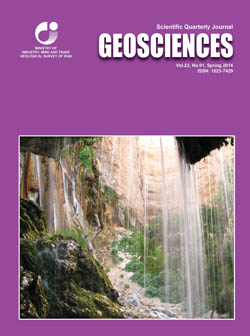Document Type : Original Research Paper
Authors
1 Ph.D. Student, Department of Geology, College of Basic Science, Islamic Azad University, Science and Research Branch, Tehran, Iran.
2 Professor, Department of Geology, Faculty of Science, Ferdowsi University of Mashhad, Mashhad, Iran.
3 Professor, Department of Geology, College of Basic Science, Islamic Azad University, Science and Research Branch, Tehran, Iran.
Abstract
The provenance and tectonic setting of the Eocene turbidite sandstones of the Saravan area in southeast of Iran have been studied based on petrography and geochemistry. These sandstones are very laterally extended and traceable at several kilometers. The sandstones are sharp-based and well-preserved and generally display Bouma sequences (Tbcde, Tabc, Tbcd, Tabcd) which consist of graded bedding, flute and groove casts, planar cross lamination, current ripples and parallel lamination. The deep water trace fossils (Nereites ichnofacies) are locally abundant. These characteristics support sedimentation by the turbidity current. The petrographical data show that these sandstones are fine to coarse grained, poorly to moderately-sorted, sub-angular to sub-rounded feldspatic litharenite. They contain mono- and poly-crystalline quartz grains, feldspar, volcanic and metamorphic rock fragments and represent Q55F14.7L30.3 proportion. The major, trace and rare earth element concentrations indicate that the source of these sediments were intermediate to felsic igneous rocks. Mean value of chemical index of alteration in analyzed samples (CIA mean ≈ 62) indicate a low to moderate degree of chemical weathering of the source area or during the sediments transportation prior to deposition.The petrographic analysis revealed a recycled orogen and transitional recycled tectonic provenance. Tectonic setting discrimination based on the major, trace and rare earth elements suggest that the Saravan sandstones components derived from an active continental margin and continental arcs.
Keywords

